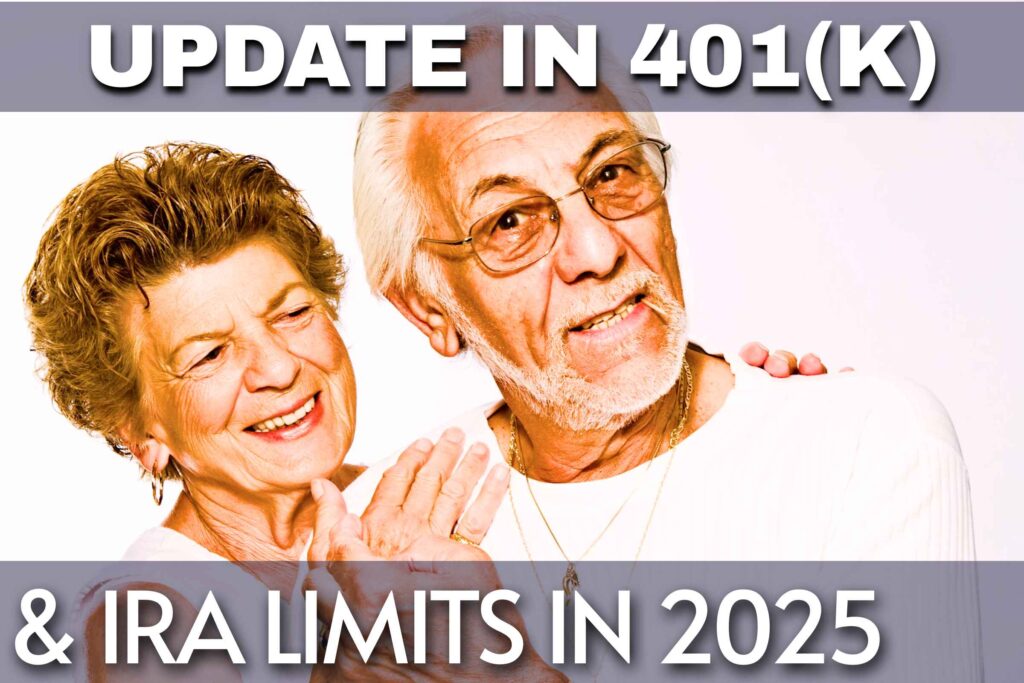The year 2025 brings significant changes to retirement savings plans, including 401(k), IRA, and Roth accounts. Here’s a breakdown of the new updates and how they can benefit your retirement strategy.
1. 401(k), 403(b), and 457 Plan Updates
Higher Contribution Limits
In 2025, the contribution limit for 401(k), 403(b), and 457 plans has increased to $23,500. This is a $500 increase from the previous year’s limit of $23,000, allowing individuals to save more for retirement.
Catch-Up Contributions for Those 50 and Older
If you’re 50 or older, you can take advantage of catch-up contributions. The new limit allows you to contribute an additional $7,500, bringing the total contribution for 2025 to $31,000.
“Super Catch-Up” for Ages 60-63
A special provision now applies to individuals aged 60 to 63. Instead of the standard $7,500 catch-up, you can contribute an additional $11,250, making your total contribution up to $34,750 in 2025.

2. Roth 401(k) and Employer Matching
Some companies now offer Roth 401(k) contributions, matching them similarly to traditional 401(k) plans. This means more opportunities for tax-free growth in your retirement accounts.
3. IRA (Individual Retirement Accounts) Changes
IRA Contribution Limits
The contribution limit for Traditional and Roth IRAs remains the same for 2025 at $7,000. For individuals aged 50 or older, an additional $1,000 can be contributed, bringing the total to $8,000.
Higher Income Limits for IRA Deductions
For those contributing to Traditional IRAs, the deduction phase-out ranges have increased. Here’s the breakdown:
- Single filers: The deduction phases out between $79,000 and $89,000.
- Married filing jointly: The deduction phases out between $126,000 and $146,000.
Roth IRA Income Limits Raised

For Roth IRA contributions, the income limits have also increased:
- Single filers: You can contribute fully if your income is under $150,000. Contributions phase out between $150,000 and $165,000.
- Married filing jointly: Contributions are allowed if your combined income is under $236,000, with a phase-out range between $236,000 and $246,000.
4. Other Notable Changes to Retirement Plans
Automatic 401(k) Enrollment for New Employees
Starting in 2025, automatic 401(k) enrollment for new employees will become the standard. Employers will automatically enroll employees at a contribution rate of at least 3%, helping individuals save for retirement more easily.
Emergency Savings Accounts in 401(k)s
Some employers may offer emergency savings accounts within 401(k) plans. These accounts allow employees to withdraw small amounts of money without incurring penalties, offering added flexibility.
Student Loan Matching for 401(k)s
Employers will also be able to match student loan payments by contributing an equivalent amount to your 401(k) or 403(b) plan. This initiative helps employees continue saving for retirement while paying off their student loans.

How to Maximize Your Retirement Savings in 2025
The updates for 2025 present several opportunities to maximize your retirement savings. Here’s what you should do:
- Increase Contributions: If possible, raise your contributions to take advantage of the higher limits for 401(k) and IRA plans.
- Check Eligibility for Catch-Up Contributions: If you’re over 50, explore the new catch-up contribution limits.
- Review Employer Benefits: Confirm whether your employer offers matching for Roth 401(k), emergency savings, or student loan payments, and take full advantage of these benefits.
Conclusion
The changes for 2025 present new opportunities for retirement savings, offering higher contribution limits, additional catch-up options, and new employer benefits. Be proactive and take advantage of these updates to improve your retirement security.

Disclaimer
This article is for informational purposes only and does not constitute financial advice. Always consult with a qualified financial advisor to make decisions regarding your retirement planning.

















